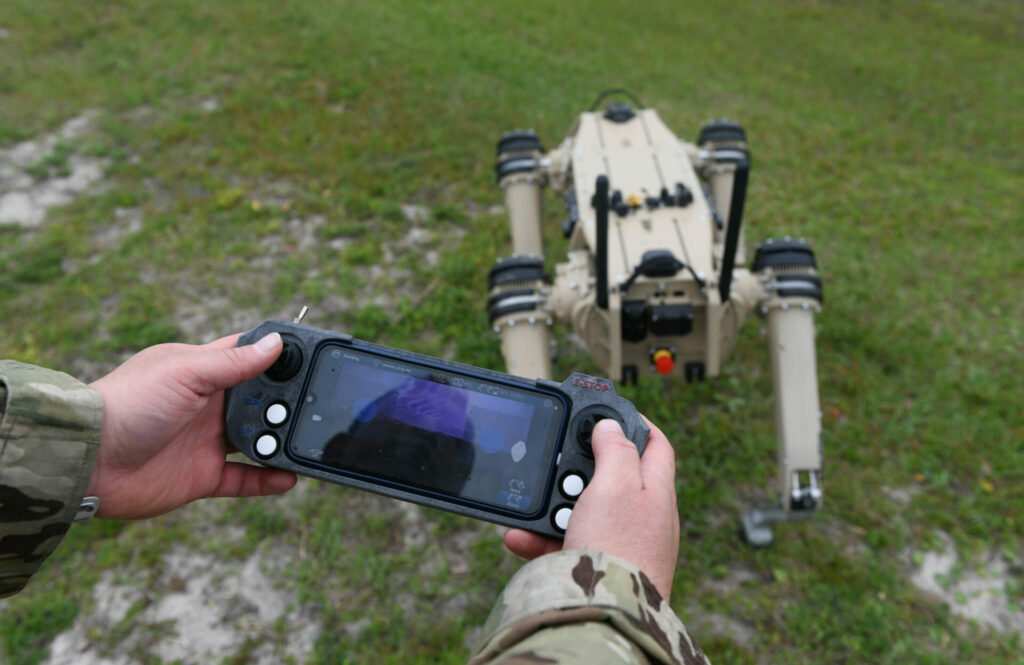These dogs don’t growl or bite, but they do provide protection for the military.
The Air Force is testing robot dogs to add security to military installations with the first set now deployed at Tyndall Air Force Base in Florida.
The “dogs” are officially called quad-legged unmanned ground vehicles, or Q-UGVs, and are able to provide security surveillance in temperatures that would be dangerous for a live guard dog. The robots also have a range of motion that allows them to climb over steep terrain or crouch low to the ground.

In a statement to Task & Purpose, an online publication that covers the military, on Monday, Tyndall’s 325th Fighter Wing public affairs shop had a little fun with their newest residents.
“The robot dogs are very good boys,” Tyndall told Task & Purpose. “They can lie down, roll over, and provide semi-autonomous patrol.”
The Air Force did not say how many of the robot dogs were patrolling Tyndall, and their handlers were traveling Tuesday and unavailable for comment.
Tyndall, which covers bout 29,000 acres, took a direct hit in October 2018 from Hurricane Michael. Since then, the base has been at a reduced capacity as the Air Force refurbishes hangars, support buildings and housing. The total cost to rebuild Tyndall is expected to top $5 billion.
“They can patrol the remote areas of a base while defenders can continue to patrol and monitor other critical areas of an installation,” Mark Shackley, Tyndall’s security forces program manager, said in a press release.
The dogs are controlled by a handler who operates them through a device that looks like a video game controller.
Tyndall’s robot dogs aren’t the military’s first. In 2005, the Defense Advanced Research Projects Agency introduced “BigDog,” a four-legged beast the size of a small horse that was designed to help ground troops carry gear up rugged terrain, over snow and through water.
The BigDog project was eventually discontinued, however, after feedback from the Marine Corps that the robot was too noisy to be effective in combat.
___
© 2021 McClatchy Washington Bureau Distributed by Tribune Content Agency, LLC.



